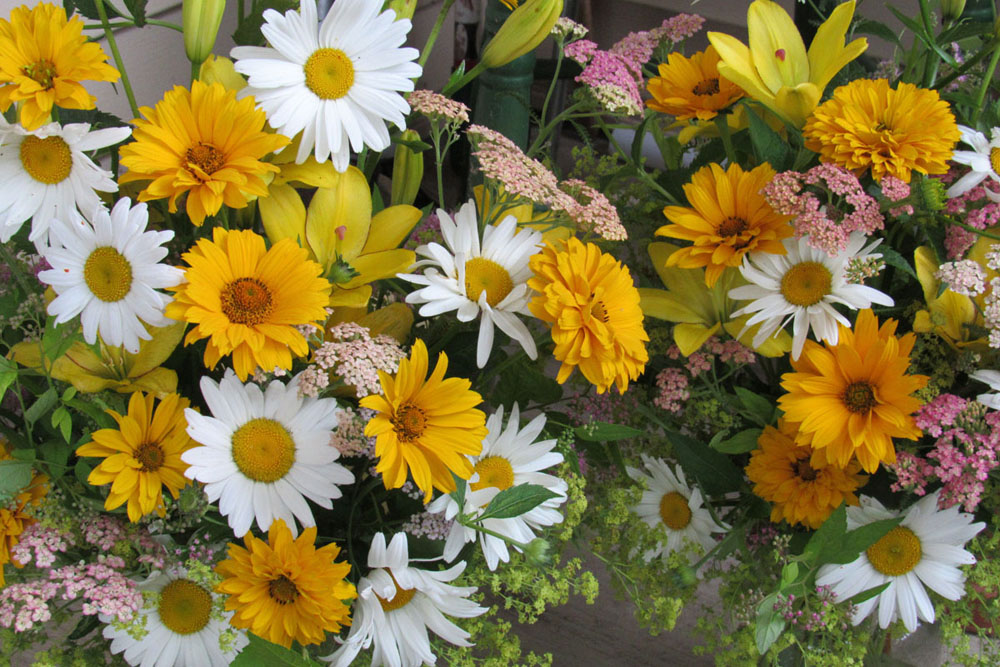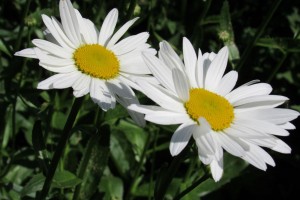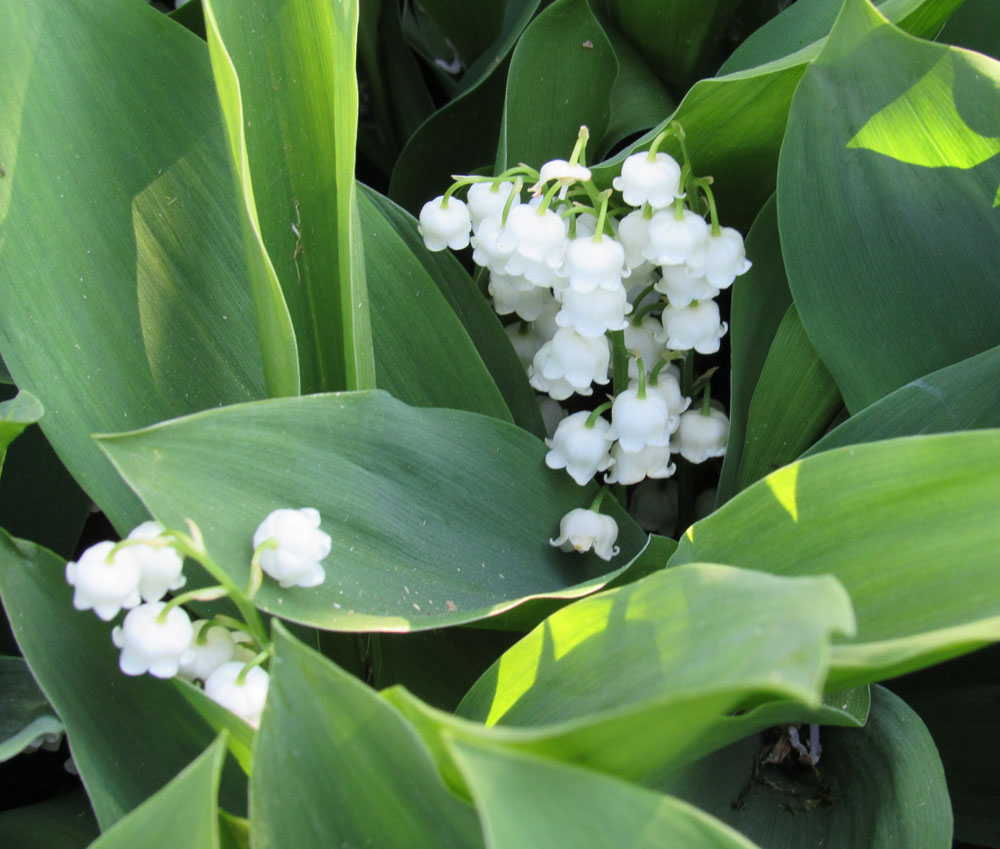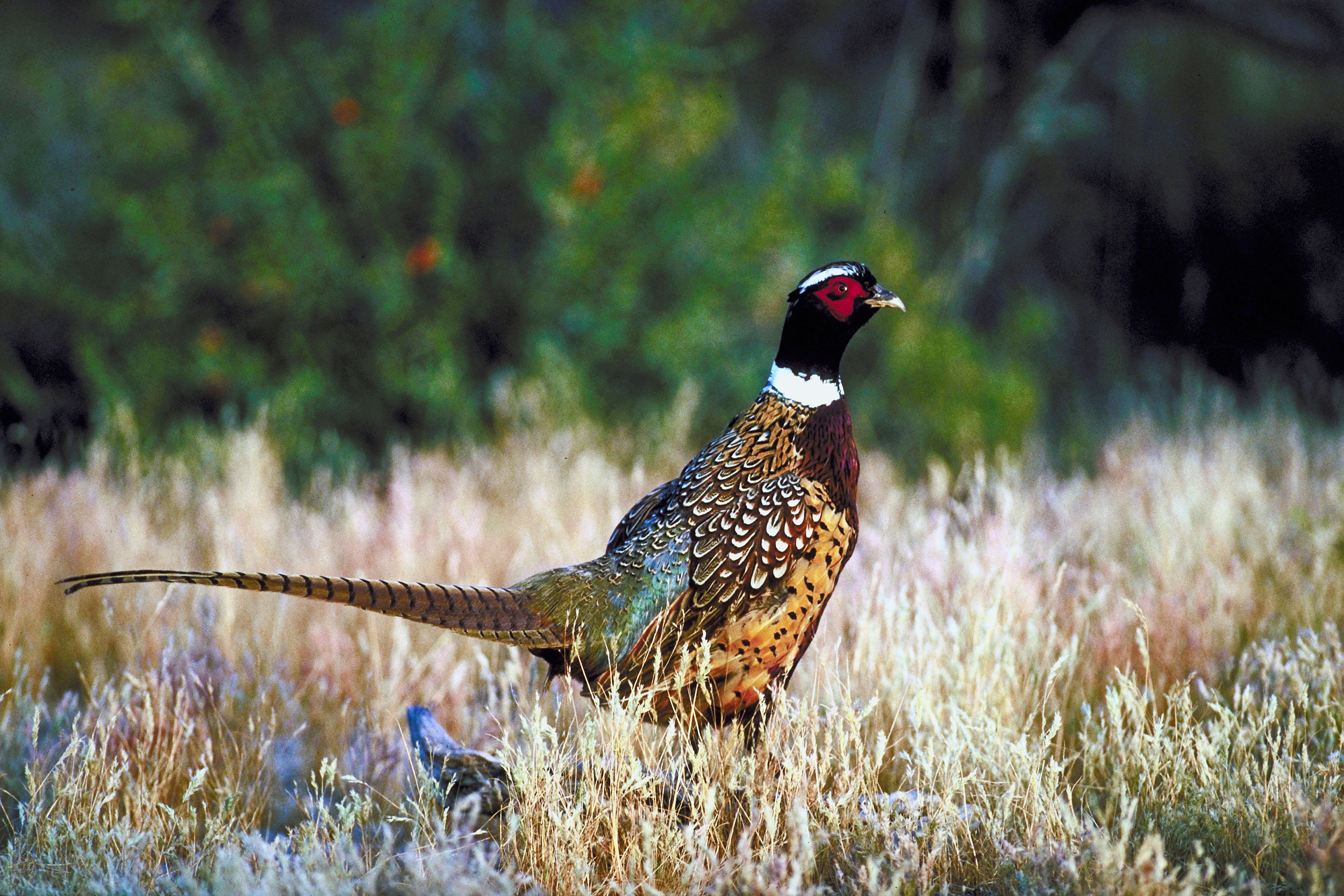Daisies make the summer garden cheery

Daisies – Shasta daisies (Leucanthemum x superbum) in particular, are a mainstay of my early summer flowerbeds and borders.
Mine come into bloom after the peonies fade and help keep the landscape looking cheery until the lilies and later blooming perennials take over.

Daisies are a member of the large Asteraceae family and feature white flower rays with yellow center disks on free-flowering plants. They like full sun, but will tolerate light shade and are not picky about soil acidity. Daisies do like rich, well-drained soil, are tolerant of rabbits and deer, and will bloom through the summer if dead flower heads are removed. Daisies also make excellent cut flowers.
Luther Burbank (1849-1926) developed the Shasta daisy in the 1890s. He crossed European oxeye daisy, Pyrenees chrysanthemum, Portuguese field daisy, and Japanese field daisy to produce the Shasta daisy, which is named for the snow-covered Mt. Shasta in northern California, and located near where Burbank did his work.
Shastas can grow 2 to 3 feet tall and spread to 18 inches wide.
My favorite Shasta cultivar is ‘Becky’ which has rigid stems that grow 3 to 4 feet tall. ‘Becky’ is larger than most other Shasta cultivars and does not require staking. Even with heavy rains this past June, mine held up well.
Daisies are easy to grow, but can be plagued by leaf miners, stem rots and leaf spots – the latter are caused by bacterial and fungal diseases. Leaf spot shows as round or irregular brown leaf spotting and is more common at times of heavy rain. Giving daisies lots of room and keeping their planting area clean can help control fungal diseases, but when it’s as wet as it has been, control can be very difficult.
In addition to giving them space, keep daisies looking their best by removing faded blooms and dividing regularly, especially when you notice the center of the clump is dying back. Separate plants and select the strongest pieces from the outside of the clump for re-planting.
Before you re-plant divisions or put in new transplants, make sure to prepare the soil well by spading it to a depth of at least 12 to18 inches and working in lots of organic material such as leaf mold, compost or well-rotted manure. Add some fertilizer following manufacturer’s directions for the amount to apply.
Making daisy chains has long been a fun garden activity. You can use daisies or any flowers with soft, flexible stems.
To braid a chain, start with three long-stemmed flowers and cross them over each other. Braid the stems together for about one inch. Add another flower so the new stem rests on top of the center and continue braiding holding the new flower stem together with the center stem.
Continue the process until your chain reaches the desired length and finish off a crown by tucking the end under near the starter head.
Students at Medina High School continue a graduation tradition that began there in the 1920s and involves a large, lush daisy chain.During graduation, 16 juniors carry a 54 ft. long daisy chain, leading graduates into the ceremony.
The chain is symbolic of “moving up day” and honors the top 16 girls – who wear white dresses and gloves – in the junior class, escorted by the top two boys who wear tuxes and red vests.
The students make the large chain themselves, gathering 90 bushels of daisies from gardens and fields and wind them tightly around a thick rope. It’s a beautiful tradition and a special way to enjoy the summer daisies.





